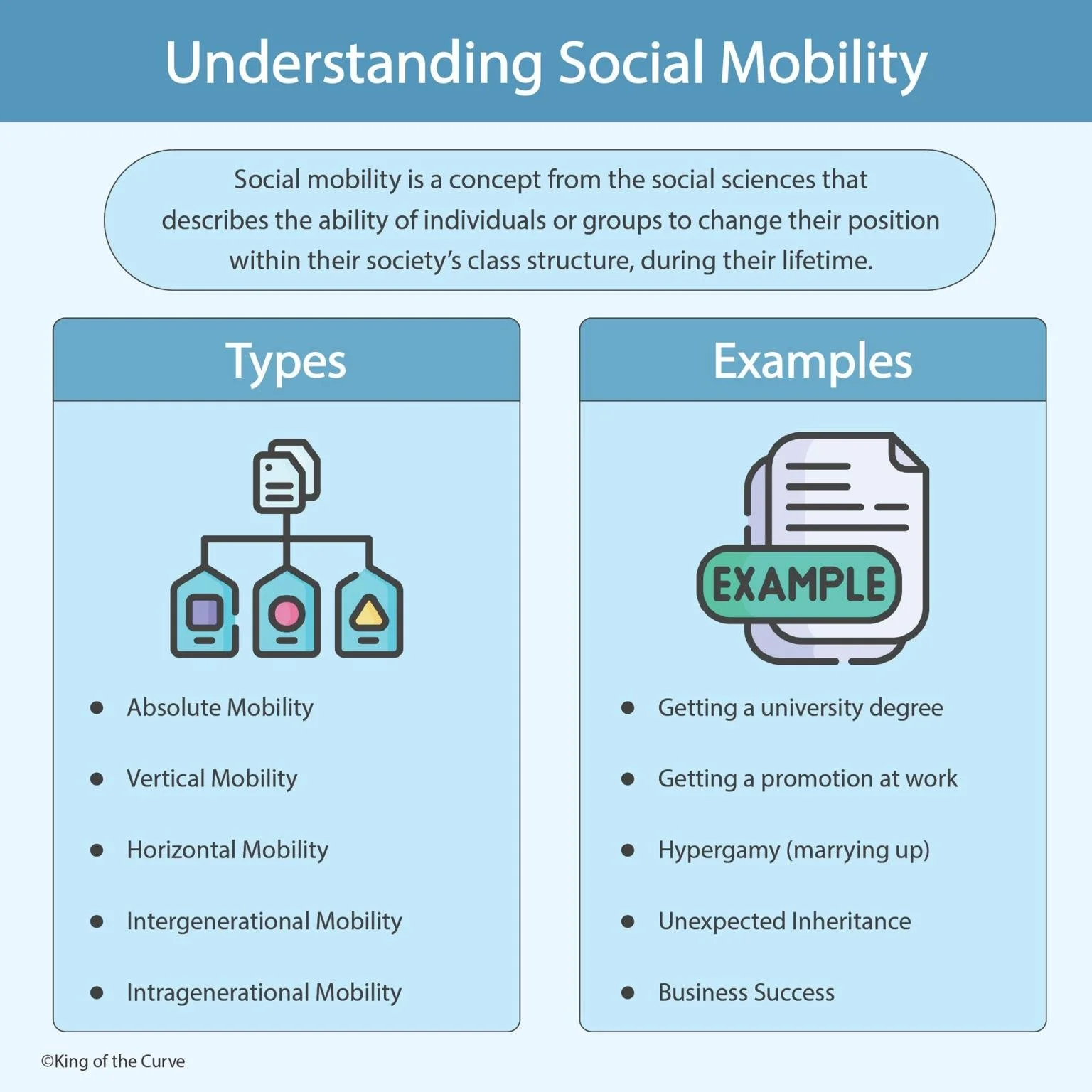📈 Understanding Social Mobility: Types & Real-Life Examples
Social mobility is a key concept in sociology and is often tested on exams like the MCAT, DAT, or USMLE. But what does it actually mean?
Let’s break it down:
🧠 What is Social Mobility?
Social mobility is the ability of individuals or groups to move up or down within a society's class structure. This movement may occur over time or even within a single lifetime, and it's influenced by factors like education, job opportunities, marriage, or wealth acquisition.
🔄 Types of Social Mobility
Understanding the different types of mobility helps you tackle both conceptual and applied questions on standardized tests.
| Type | Definition |
|---|---|
| Absolute Mobility | A general rise in living standards across the entire society. |
| Vertical Mobility | Movement up or down the social ladder (e.g., promotion or job loss). |
| Horizontal Mobility | Changing jobs or roles without a shift in social status. |
| Intergenerational Mobility | Status changes between different generations in the same family. |
| Intragenerational Mobility | Status changes that happen within one person’s lifetime. |
🧠 Fun Fact: Relearning reflects the savings effect—a memory trace was there, just dormant!
📌 Real-Life Examples of Social Mobility
These examples illustrate how mobility can appear in real-world scenarios:
🎓 Getting a university degree – Often leads to upward mobility.
💼 Promotion at work – A classic example of vertical mobility.
💍 Hypergamy (marrying up) – Moving to a higher class through marriage.
🧾 Receiving an inheritance – A financial boost that may elevate social status.
🚀 Business success – Starting a business and thriving can lead to upward mobility.
🧪 Why It Matters for the MCAT & Other Exams
Test makers love to challenge you with scenario-based questions that link mobility to health disparities, socioeconomic outcomes, or demographic trends.
💡 Tip: If a question discusses someone improving their lifestyle through education or career, think: vertical or inter/intragenerational mobility.
✅ Summary Table
| Type of Mobility | Example |
|---|---|
| Absolute Mobility | Country-wide income rise |
| Vertical Mobility | Promotion to executive |
| Horizontal Mobility | Job change with same pay/status |
| Intergenerational Mobility | Son of a farmer becomes a doctor |
| Intragenerational Mobility | A retail worker becomes a CEO |
🧭 Final Thoughts
Social mobility reflects the dynamic structure of society. Recognizing how and why people move within it helps you understand inequality, opportunity, and sociocultural patterns—essential for scoring high on your exam.
Frequently Asked Questions (FAQs)
-
Aim for 4-6 focused hours, ensuring you incorporate breaks to avoid burnout.
-
Practice mindfulness techniques, take practice exams under realistic conditions, and maintain a balanced lifestyle.
-
Set short-term goals, seek support from mentors, and reward yourself for small achievements.
-
Regular exercise improves focus, reduces stress, and enhances overall mental clarity.
-
KOTC offers personalized learning tools, gamification features, and adaptive question banks to help students stay on track without burnout.


